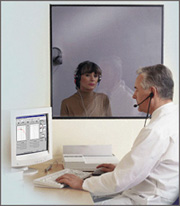
WE CAN HELP YOU, CALL US
+033 2463 0237 /
+91 98300 46401 /
90380 77790 /
89102 58067

WE CAN HELP YOU, CALL US
+033 2463 0237 /
+91 98300 46401 /
90380 77790 /
89102 58067
Hearing instruments have helped millions of people to hear better and live a more socially active life.
This page describes the different types of hearing instruments available today - how they work, what to consider when choosing an instrument, and how they can help you best.
What Is A Hearing Instrument?
A hearing instrument is an electronic, battery - operated device. Hearing Aid pickup sound, makes it louder and sends it into the ear. A Hearing Aid has three basic parts, a microphone, an amplifier and a loudspeaker (called a receiver in Hearing Aid).
Microphone - Picks up sound waves and converts them into electronic signals. Amplifier - Increases the loudness of the signal. Loudspeaker - Reconverts the amplified signals into sounds.
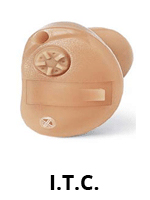
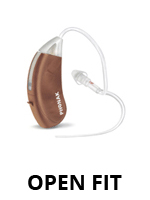
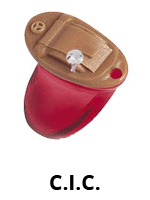
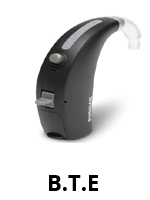
Need a Hearing Aid?
Our Audiologist will discuss with you in detail with the hearing test report (Audiogram). He will guide you, which hearing Aid is best suited for you.
Remember -
• Hearing Aid is not a Consumer good like T.V. / Radio, that you can directly buy from a shop
• Audiologist (person who have proper degree in Audiology) is the best person to select / pescribe a hearing Aid.
There are five basic types of hearing instruments. Our Audiologist will help you to decide which type is best for your hearing loss
1) Body Worn (Pocket ) Hearing Aid -
Consist of a small box that contains the microphone and amplifier, a cord with a receiver and an earmould. These models are less difficult to use and more economical but have very limited features and poor cosmetic look.
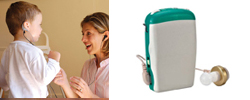
2) Behind - The - Ear (BTE) -
Behind - the - ear hearing aid are placed behind the user's ear and connected to an ear mould by a tube. BTE instruments can assist more types of hearing loss than any other instruments.
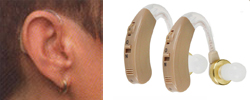
3) In - The - Ear (BTE) -
An ITE instrument is completely contained in a Custom - made acrylic shell or casing that fits into the outer ear. ITE's are easy to handle and give you easy assess to controls. They are suitable for mild to serve hearing loss.
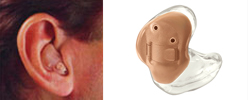
4) In - The - Canal (ITC) -
Somewhat smaller than an ITE, ITC device is Custom - made to fit the contours of your ear canal. ITCs are discreet, yet visible within the our ear. They are suitable for mild to mederately severe hearing loss.
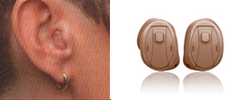
5) ICompletely - In-The-Canal (CIC) -
The tiny CIC instrument fits so deep in ear canals that it is practically invisible. A small nylon cord assits easy insertion or removal. Like ITCs, these instruments can be used for mild to moderately severe hearing loss.
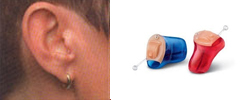
1) Hearing Aid Technology -
A hearing instrument contains mainly two different types of electronic circuitry.
Analogue or Conventional Analogue & Digital.
2) Conventional Analogue -
This type of circuity offers few automatic features and limited flexibility. Volume is adjusted mannually and it is not possible to program the hearing instrument. The circuit treats both soft and loud sounds the same, which means that both speech and background noise typically become louder.
3) Digital -
Digital devices are the most advanced solutions on the market today. It can be programmed using a computer or trimmer controlled in economical models. A digital instrument provides the greatest flexibility for matching individual hearing requirements and filtering out unwanted sounds. The performance of these instruments can also change with listening needs for example, they can analyze surrounding sounds to maximize soft speech like sounds, while minimizing louder background noises such as traffic or wind.
4) Digital Advantages -
Digital processing of sound ensures great sound quality and makes it possible to create hearing instruments with enhanced processing features. Some of the advantages are :
a) Directionality
Directional technology features advanced microphones that can identify sounds based on the direction they are coming from. Unwanted sounds coming from a certain direction can then be reduced. For example, background noises coming from behind are dampened while others sounds coming in front (such as speech ) are amplified. Directionality is scientifically proven to be the single most important means of understanding speech in noisy situations.
b) Feedback Cancellation
Feedback cancellation monitors for feedback squealing while the listeners is wearing the hearing instrument. Moderate feedback is than reduced or eliminated by a digital cancellation system.
c) Multiple Programs
Many hearing instruments can be set up with a variety of listening programs for different sound environments. Pressing a button on the aid or on a remote control allows you to instantly change programe - from quiet to noise, for example, when going outside onto a busy street.
5) Noise Reduction -
The noise reduction processing available in some digital hearing instruments assist to discriminate between sounds that the user probably wants to hear - such as speech. Noise reduction is also useful in quiet surroundings to dampen softer, often irritating sounds such as the hum of computers, ventilating systems and household appliances.
Listening with two ears, called " binaural hearing ", offers many advantages over listening with one.
• It helps you to locate where sounds are coming from, and tell approximately how far they are.
• You can easily distinguish speech from noise, and focus on the speech.
• The same volume sounds louder when listening with two years rather than one.
• Wearing two hearing instruments is also a way to improve and preserve your hearing ability.
When the brain is deprived of sound information, it gradually loses its ability to interpret
sound optimally. Research has shown that individuals who only wear one hearing instrument maydemonstrate deterioration in speech understanding on the unaided ear. Regular use of an appropriately fitted hearing instrument helps check and even reverse this.
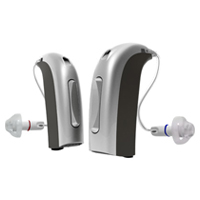
There are five basic types of hearing instruments. Our Audiologist will help you to decide which type is best for your hearing loss
1) Ear Mould -
Behind-the-ear (BTE) & Pocket type Hearing Aids require ear mould for
• To hold the Hearing Aid into the ear canal better than eartips.
• To give better quality of sound
• To stop whistling sound (feedback)
Price Range
• Hard - Rs.225/- To Rs.400/-
• Soft - Rs.500/-
2) Batteries -
Depending upon Hearing Aid type & size, there are four types of batteries as size P-675, P-13, P-312, P-10.
3) Cord -
In Pocket Hearing Aid, cords have to be changed when damage
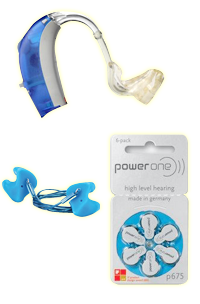
Ready for a Hearing Evaluation?
• If you suspect you have a hearing loss, make an appointment with our Audiologist to have a hearing test. • Hearing test is easy comfortable and safe. • After the age of 50, a regular hearing test should be a part of your annual health check-up • Hearing test procedure is called Audiometry & Plotted on a graph is called Audiogram.
